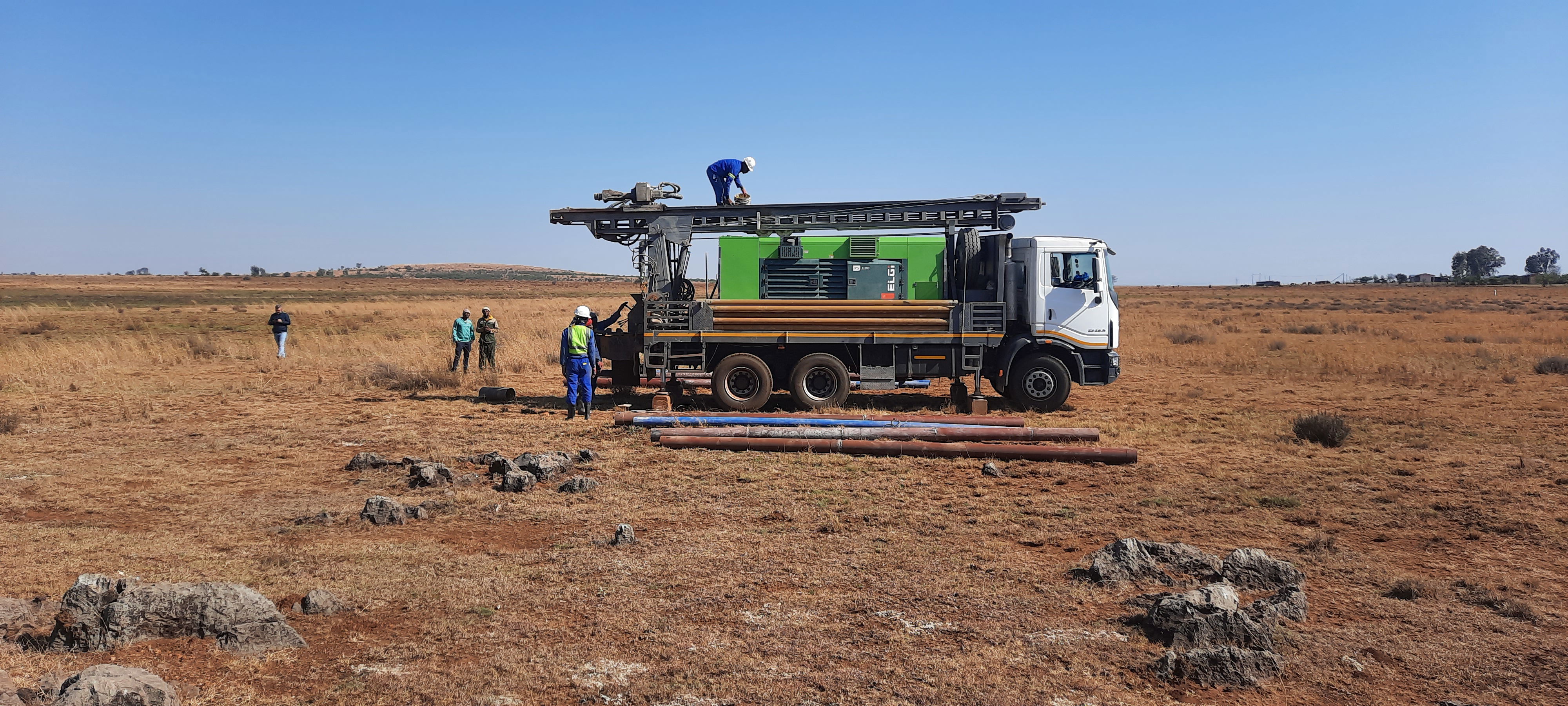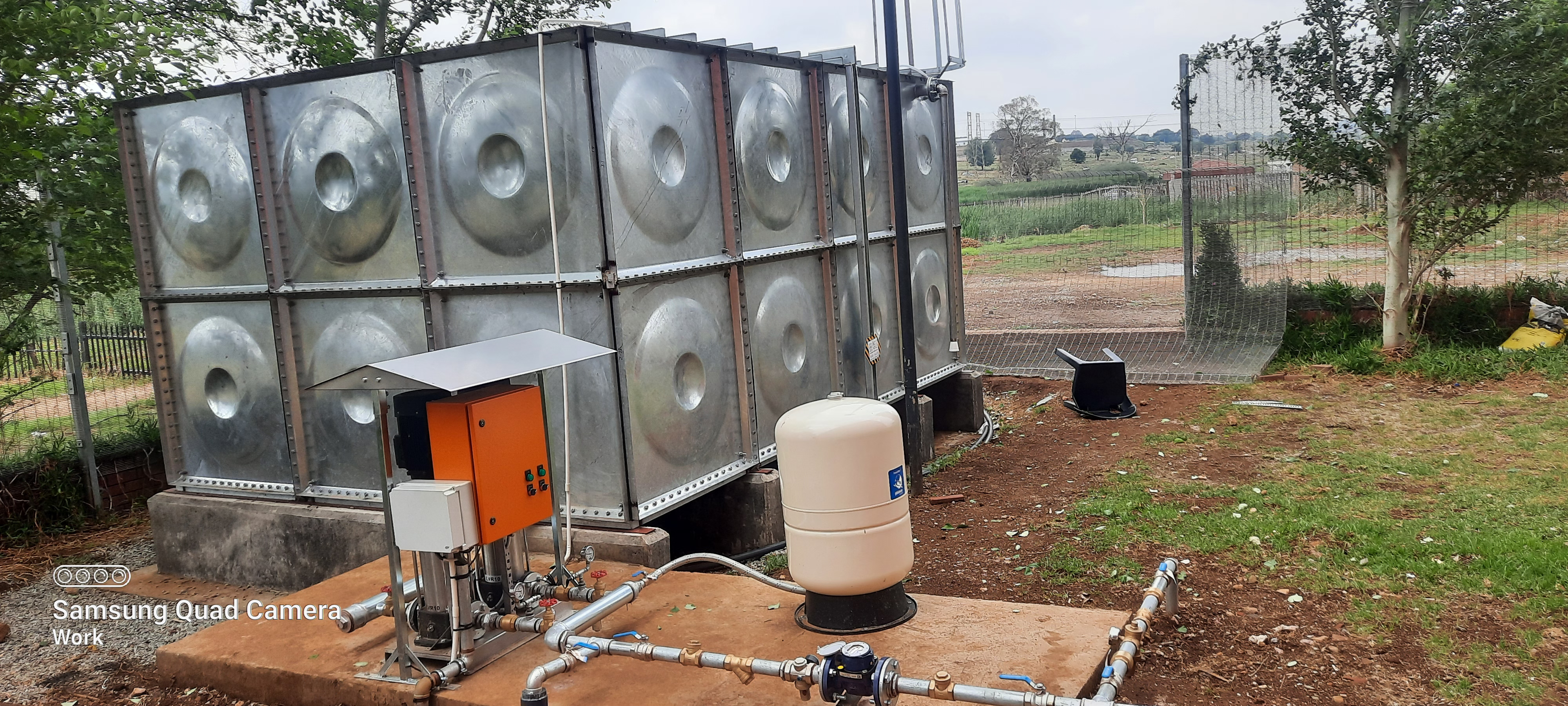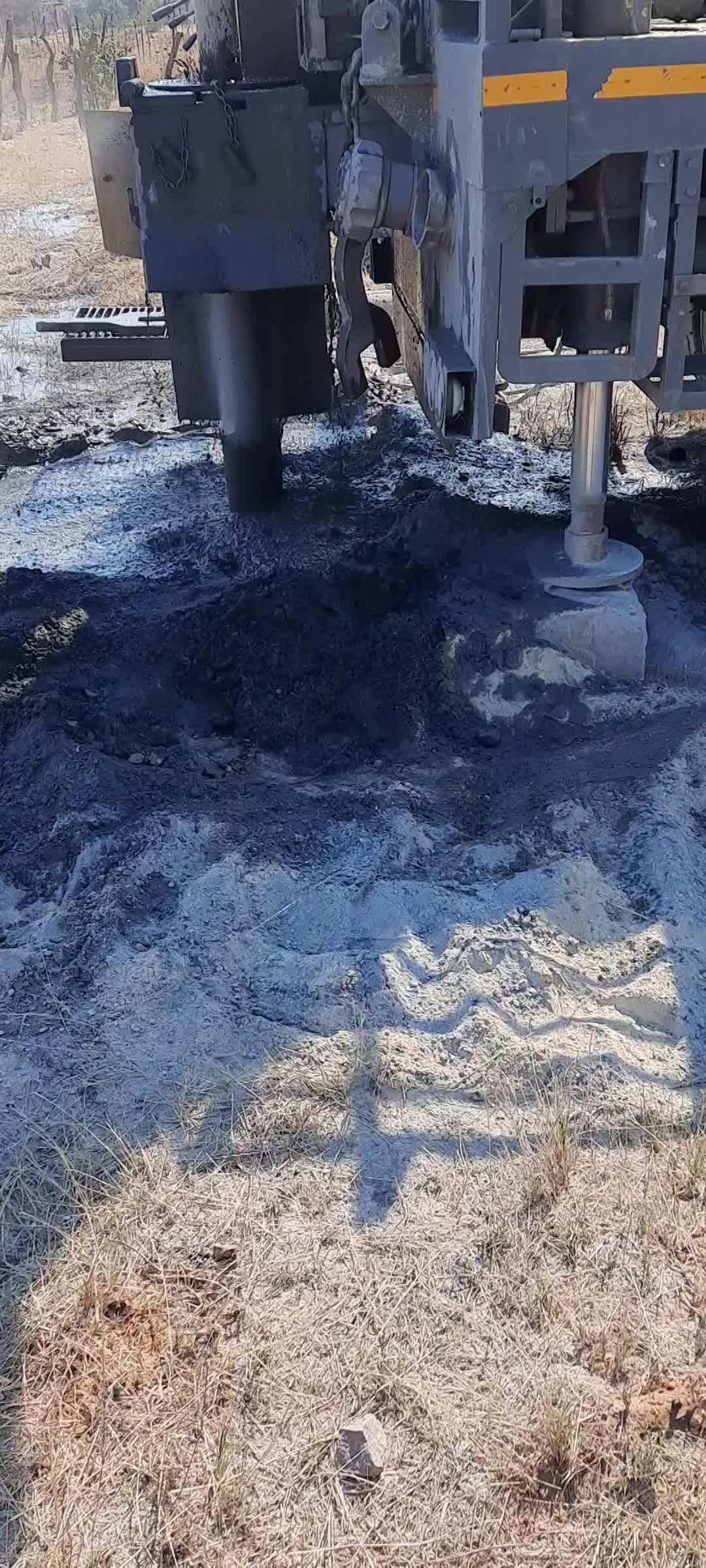Expert Borehole Drilling & Yield Testing Services | Booster Pumps - Copy - Copy
Expert Borehole Drilling & Yield Testing Services
In an age where access to clean and reliable water sources is paramount, expert borehole drilling and yield testing services play a crucial role in meeting the needs of communities, businesses, and agricultural enterprises. Borehole drilling is not just a technical process; it involves meticulous planning, advanced technology, and a deep understanding of geological conditions. With the right expertise, borehole drilling can unlock sustainable water supplies that support livelihoods and enhance productivity. In this article, we will delve into the significance of professional borehole drilling services, exploring how they can transform water accessibility and contribute to efficient resource management. Whether you're a homeowner seeking a personal water source or an organization in need of large-scale water solutions, understanding the intricacies of borehole drilling is the first step toward harnessing this vital resource.

Why Borehole Drilling is Essential for Water Supply
Access to clean and reliable water is a fundamental necessity for human survival, making borehole drilling an essential solution for water supply in various regions worldwide. In many areas, especially where surface water sources are contaminated or scarce, borehole drilling provides a sustainable alternative. By reaching deep underground aquifers, boreholes can tap into vast reservoirs of fresh water, bypassing seasonal fluctuations and surface pollution. This method not only secures a consistent water supply but also enhances community resilience against droughts and climate change.Borehole drilling involves the use of specialized drilling equipment to create vertical shafts that access underground water sources. The process begins with thorough geological surveys to identify suitable locations for drilling, ensuring that the boreholes yield adequate quantities of water. Once a site is selected, drilling is performed, and the borehole is lined with steel or PVC casings to prevent contamination and collapse. Boreholes can be equipped with pumps, facilitating easy extraction of water for various uses such as drinking, irrigation, and sanitation. This accessibility is particularly crucial in rural and developing areas where alternative water infrastructure may be lacking.Moreover, investing in borehole drilling can have broader socio-economic benefits. Access to reliable water sources encourages agricultural productivity, contributing to food security and economic stability. Communities can cultivate crops year-round, reducing dependency on unpredictable rainfall patterns. Furthermore, with consistent water supply, health standards improve as hygiene practices are more easily maintained, resulting in reduced waterborne diseases. Hence, borehole drilling not only addresses immediate water needs but also promotes long-term community development.In conclusion, borehole drilling is not just a technique for accessing water; it is a vital lifeline for countless communities around the globe. Its role in enhancing water security, boosting agricultural productivity, and improving public health illustrates its importance in sustainable development efforts. As the pressures of climate change and population growth intensify, investing in borehole drilling technology and infrastructure will be critical in safeguarding water resources for future generations.
Understanding the Process of Borehole Drilling
Borehole drilling is a critical process employed primarily for the extraction of groundwater, mineral resources, or for geological research. It involves creating a deep, narrow hole in the ground, typically using specialized drilling equipment. This procedure can vary significantly in terms of methodology, depth, and complexity, depending on the specific purpose for which the borehole is being drilled. Understanding the intricacies of borehole drilling enables one to appreciate its importance in various fields, such as agriculture, mining, and environmental science.The technique begins with site assessment, which is essential to determine the most suitable location for the drill. Engineers and geologists analyze geological maps and perform site surveys to identify groundwater aquifers or mineral deposits. Once a favorable site is identified, the drilling process starts with the selection of the appropriate drilling method. Common techniques include rotary drilling, percussion drilling, and auger drilling, each with its own set of advantages and limitations. The chosen method is influenced by soil characteristics, the depth of the desired borehole, and the environmental conditions of the area.During the drilling process, a drill bit is progressively advanced into the ground. As the borehole is drilled deeper, casing pipes may be inserted to prevent the collapse of the walls and to protect the borehole from contamination. Additionally, drilling fluid is often used to lubricate the drill bit and to carry the cuttings out of the borehole. This fluid plays a vital role in maintaining pressure and cooling the equipment. The monitoring of drilling parameters, such as penetration rate and torque, provides valuable insights into the geological conditions encountered and ensures that the process remains efficient and safe.After reaching the desired depth, the final phase of borehole drilling involves the installation of pumps or monitoring equipment, depending on the intended use of the borehole. For water supply purposes, well installations are completed, while monitoring wells may be equipped with sensors to collect data on groundwater levels and quality. Understanding the process of borehole drilling not only highlights the technical skills involved but also underscores its significance in sustainable resource management and environmental monitoring, ultimately contributing to informed decision-making in resource utilization.
Factors to Consider Before Borehole Drilling
Before embarking on borehole drilling, it is essential to consider several key factors to ensure the success and sustainability of the project. First and foremost, understanding the geological conditions of the area is crucial. This includes assessing the type of soil and rock formations present, as these factors influence not only the drilling process but also the quality and quantity of the water that can be extracted. Engaging with geologists or hydrologists can provide valuable insights into the subsurface conditions and help determine the most suitable drilling methods, thereby minimizing potential complications later on.Another important factor to deliberate is the intended use of the borehole. Different applications—such as agricultural irrigation, domestic water supply, or industrial use—may require varying depths and techniques of borehole drilling. Additionally, knowing the demand for water can help in planning the borehole's capacity. Overestimating needs could lead to unnecessary expenditures, while underestimating might result in inadequate water supply. Therefore, a thorough assessment of current and projected water requirements is imperative.Permitting and regulatory requirements play a significant role in borehole drilling as well. Many regions have specific laws regarding water extraction, and drilling a borehole without the necessary permits can lead to fines or even the shutdown of operations. It is advisable to engage with local authorities and ensure compliance with all regulations before proceeding. Furthermore, understanding the legal framework surrounding water rights in your area can protect against potential disputes with neighbors or other water users.Lastly, financial considerations should not be overlooked. Borehole drilling can be a costly investment, and budgeting for the entire project, including drilling, casing, and potential maintenance, is essential. Exploring different drilling companies and their pricing models can help in making an informed decision. By taking the time to evaluate these factors, individuals and businesses can optimize their borehole drilling efforts, ensuring they tap into this vital resource efficiently and sustainably.
The Importance of Yield Testing in Borehole Drilling
Yield testing is a critical aspect of borehole drilling that directly informs the feasibility and sustainability of water extraction projects. By measuring the amount of water produced from a borehole over a designated period, yield testing provides essential data that helps engineers and hydrologists determine whether the site can reliably supply the necessary water volume. This testing is especially important in arid regions or locations where water resources are limited, ensuring that communities can develop sustainable water supply systems without depleting local aquifers.In addition to assessing the quantity of water, yield testing also offers insights into the water quality. During borehole drilling, there might be variations in groundwater chemistry, which can significantly affect the usability of the water. By conducting yield tests, practitioners can not only estimate how much water can be extracted but also ensure that it meets health and safety standards. This is crucial for projects aimed at providing potable water to communities or for agricultural purposes, as any contaminants or adverse characteristics can have severe implications for public health and ecosystem balance.Moreover, yield testing aids in the long-term management of groundwater resources. By establishing baseline data on a borehole’s performance over time, stakeholders can monitor changes and trends in yield that may indicate declining water levels or contamination issues. This proactive approach allows for the timely implementation of mitigation strategies, safeguarding both the borehole site and surrounding ecosystems from potential over-extraction or degradation.Ultimately, borehole drilling without adequate yield testing can lead to significant economic and environmental consequences. Unmonitored drilling may yield insufficient water for intended uses, leading to wasted investments and unrealized benefits for communities. Therefore, incorporating rigorous yield testing into the borehole drilling process is essential for ensuring that water resource projects are effective, efficient, and sustainable in the long run.
Benefits of Installing Booster Pumps for Boreholes
Installing booster pumps for boreholes can significantly enhance water supply systems, particularly in areas reliant on borehole drilling. These pumps serve to increase water pressure, ensuring a consistent and reliable flow to homes, agricultural lands, and industrial uses. As demand for water rises, especially in regions facing water scarcity, the strategic implementation of booster pumps can make a substantial difference in water distribution efficiency.One of the primary benefits of booster pumps is their ability to elevate water pressure, which allows for better reach and distribution across larger areas. When boreholes are drilled, the water source is often at a considerable depth, which can lead to inadequate pressure for effective distribution. By installing a booster pump, the pressure can be increased, enabling water to travel farther and supply various outlets simultaneously. This is particularly beneficial for farmers who need to irrigate extensive fields or for urban areas where multiple households depend on a single borehole source.Additionally, booster pumps contribute to the overall sustainability of water resources. By improving the efficiency of water delivery systems, they help reduce wastage and improve accessibility for communities. In regions where borehole drilling is a common practice, incorporating booster pumps can lead to better resource management, ensuring that water supply keeps pace with the growing population and changing climatic conditions. Ultimately, this leads to a more resilient water supply infrastructure, capable of meeting the varying demands of different users.In conclusion, the integration of booster pumps into borehole systems is a pragmatic solution for overcoming the challenges of water pressure and accessibility. These devices not only enhance the functionality of boreholes but also support the broader objectives of resource conservation and sustainable development. As communities continue to grapple with water shortages, the role of booster pumps will become increasingly vital in ensuring that fresh water remains accessible, efficient, and reliable.

Maintenance Tips for Borehole Drilling Equipment
Proper maintenance of borehole drilling equipment is essential for ensuring efficient operation and prolonging the lifespan of your tools. Regular maintenance not only enhances performance but also helps prevent costly repairs and downtime. A thorough inspection should be conducted before and after each drilling project, focusing on identifying any wear and tear or signs of damage. Ensuring that drill bits, pumps, and other essential components are in optimal condition is crucial to achieving the desired drilling depth and ensuring safety on the job site.Cleaning is another vital aspect of maintaining borehole drilling equipment. Accumulated dirt, debris, and mud can inhibit the functionality of various machine parts, leading to inefficiencies and potential malfunctions. Regularly removing these deposits will enhance the drilling process and support the longevity of your equipment. Additionally, lubricating moving parts will reduce friction, allowing the machinery to operate smoothly and preventing overheating. This simple but often overlooked step can make a significant difference in the performance of borehole drilling systems.It’s also important to keep an eye on hydraulic systems and ensure that they are functioning correctly. Checking for leaks, maintaining proper fluid levels, and replacing filters as necessary can prevent hydraulic failures during drilling operations. Given the heavy-duty nature of borehole drilling, parts can become stressed and need to be replaced at regular intervals. Establishing a routine replacement schedule for critical components will help avoid unexpected breakdowns during crucial drilling projects.Finally, training operators on best maintenance practices is an investment that pays dividends in efficiency and safety. An educated operator is more likely to recognize maintenance needs and take proactive measures to prevent equipment failure. Regular workshops or training sessions can help keep your team informed about the latest advancements in borehole drilling technology and maintenance techniques, ultimately leading to more successful drilling operations and reduced costs over time. By prioritizing the care and upkeep of borehole drilling equipment, you can ensure that your projects run smoothly and effectively.
Cost Analysis of Borehole Drilling Projects
Cost analysis of borehole drilling projects is a critical process that enables stakeholders to understand the financial implications and overall feasibility of such ventures. Borehole drilling, which involves the excavation of a deep vertical hole into the ground, is often essential for accessing groundwater or for other subsurface exploration activities. Various factors contribute to the total cost of these projects, including site preparation, equipment procurement, labor costs, and ongoing maintenance. Accurately estimating these costs is necessary not only for budgeting purposes but also for attracting investment and ensuring the long-term sustainability of the water supply.One significant aspect of the cost analysis is the selection of drilling methods, which can vary greatly in terms of efficiency and expense. Conventional rotary drilling, for example, typically requires specialized equipment and skilled labor, resulting in higher initial costs. On the other hand, more modern techniques, such as air rotary or direct mud circulation, might offer savings in both time and money, albeit with their own set of considerations. Additionally, geographic location plays a vital role in determining expenses, as factors like soil composition and depth to the water table can significantly influence drilling duration and the type of equipment needed.Logistics also present an essential component in the overall cost analysis. Transportation of equipment and personnel to the drill site, disposal of drilling mud, and re-stabilization of the site post-drilling all incur additional expenses. These logistics must be planned meticulously to avoid unexpected costs that can quickly derail project budgets. Furthermore, the regulatory landscape surrounding borehole drilling can introduce another layer of complexity. Permitting fees, compliance costs, and environmental assessments are all factors that must be accounted for in a thorough cost analysis.Ultimately, the success of borehole drilling projects hinges on a comprehensive understanding of all associated costs. A thorough cost analysis empowers stakeholders to make informed decisions that balance financial constraints with operational needs. By considering all factors—from drilling techniques to logistical requirements—project managers can better navigate the complexities of borehole drilling, ensuring that projects remain on budget and are executed efficiently. As water scarcity becomes an increasingly pressing global issue, effective cost management in borehole drilling projects will be vital for sustainable resource management.
Environmental Impact of Borehole Drilling
Borehole drilling has emerged as a critical method for accessing groundwater, particularly in regions grappling with water scarcity. While it is often seen as a solution to immediate water supply issues, the environmental impact of borehole drilling cannot be overlooked. The process typically involves the excavation of deep holes into the ground to reach aquifers, which can lead to significant alterations in the local ecosystem. Groundwater extraction can lead to a drop in water levels, affecting not only the immediate area but also surrounding ecosystems that rely on this resource, potentially leading to the loss of biodiversity.Moreover, the drilling process itself can contribute to soil degradation and contamination. As the borehole is drilled, the disturbance of soil layers can lead to erosion and destabilization of the land. Chemical spills during drilling operations, whether from lubricants or drilling fluids, pose a risk to both soil and groundwater quality. These contaminants can seep into the surrounding environment, affecting plant growth and harming local wildlife. The risk of pollution is particularly high in areas where borehole drilling is conducted without proper regulations and oversight, leading to long-term consequences for both the ecosystem and human health.In addition to contamination and habitat disruption, borehole drilling can also contribute to issues like over-extraction of groundwater. Over time, the depletion of aquifers can result in land subsidence, where the ground sinks due to the lack of support from underground water. This not only affects land usability but can also damage infrastructure, creating further challenges for communities dependent on stable land for agriculture and development. The sustainability of borehole drilling relies heavily on responsible management practices, which are often lacking in regions where the demand for accessible water is high.To mitigate the environmental impact of borehole drilling, it is essential for stakeholders, including governments, local communities, and non-governmental organizations, to establish and enforce regulations that govern groundwater extraction. Sustainable practices, such as monitoring water quality and quantities, can help balance the need for access to groundwater with the preservation of local ecosystems. As we continue to face the challenges of climate change and increasing water scarcity, it is critical to evaluate and address the repercussions of borehole drilling to ensure a sustainable future for both people and the environment.
Innovations in Borehole Drilling Technology
In recent years, the field of borehole drilling technology has experienced significant innovations that are transforming how resource exploration and groundwater extraction are conducted. Traditional drilling methods often faced challenges such as slow penetration rates, high operational costs, and significant environmental impact. However, advancements in drilling rigs and techniques are addressing these issues, making borehole drilling more efficient and sustainable. Automation and remote monitoring capabilities are now embedded in many modern drilling systems, allowing operators to optimize performance and reduce downtime while enhancing safety measures.One of the most notable advancements has been the integration of rotary steerable systems (RSS) in borehole drilling. This technology allows for precise directional control during drilling, enabling operators to reach their targets more accurately and with less energy consumption. Furthermore, the development of advanced materials, such as polycrystalline diamond bits, has dramatically increased the durability and effectiveness of drill bits, allowing for deeper penetration into various geological formations. The ability to drill at unprecedented depths not only extends the reach of resource extraction but also opens up new opportunities for geothermal energy and mineral exploration.Another innovation is the incorporation of real-time data analytics and machine learning into the drilling process. By leveraging sensor technology, operators can collect vast amounts of data during the drilling operation, which can be analyzed to predict equipment failures, optimize drilling parameters, and even refine geological models. This shift towards data-driven decision-making not only enhances operational efficiency but also minimizes the environmental footprint associated with borehole drilling activities, paving the way for more responsible resource management.As the demand for energy, water, and raw materials continues to grow globally, innovations in borehole drilling technology are proving essential in meeting these challenges. The combination of enhanced precision, automation, and data analytics is setting new standards for the industry, offering a more sustainable approach to resource exploration and extraction. As this field continues to evolve, the potential for further innovations remains boundless, promising to revolutionize the way we interact with the Earth's subsurface.
Choosing the Right Company for Borehole Drilling Services
When it comes to accessing groundwater for agricultural, industrial, or domestic use, choosing the right company for borehole drilling services is a critical decision that can significantly impact the project's success. The process of borehole drilling involves not just the physical act of drilling into the ground, but also requires a comprehensive understanding of geology, hydrology, and the local environment. As such, it's essential to work with a company that has a proven track record and specialized expertise in this field.First and foremost, potential clients should research the experience and reputation of various drilling companies. A reputable borehole drilling company will have extensive experience in handling diverse geological conditions and will be able to demonstrate a history of successful projects. Testimonials and reviews from previous clients can provide valuable insights into a company's reliability, professionalism, and quality of work. It is advisable to seek recommendations from peers or industry associations to compile a shortlist of reputable firms to consider.In addition to evaluating experience, potential clients should determine the range of services offered by a borehole drilling company. The best companies do not simply drill; they also provide critical services such as geological surveys, hydrological assessments, and ongoing maintenance for the borehole. A comprehensive approach ensures that the drilling process is efficient and that the finished borehole meets all regulatory requirements and optimizes water yield. Moreover, before making a final decision, it is essential to inquire about the technology and equipment used, as advancements in drilling methods can influence the success and cost of the project.Ultimately, transparency and communication are key factors in establishing a partnership with a borehole drilling service provider. A trustworthy company will be open about their processes, provide clear cost estimates, and be willing to answer any questions that arise throughout the project. By prioritizing these factors—experience, service range, technology, and communication—clients can make an informed decision that will lead to a successful borehole drilling venture, ensuring access to the essential resource of groundwater for years to come.



